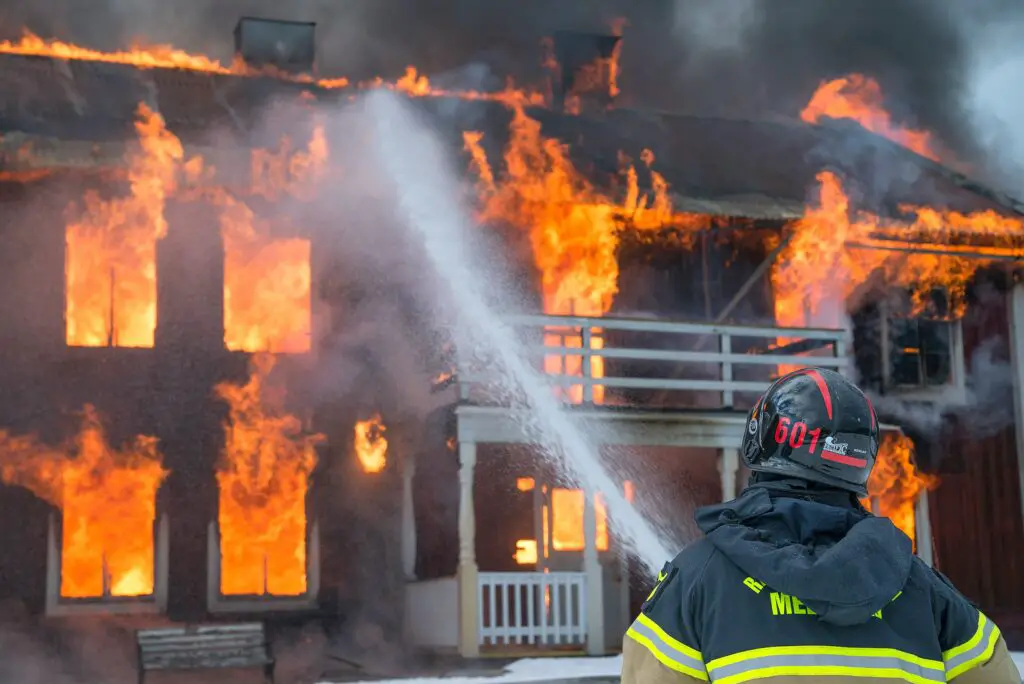If you have probably seen firefighters at work, then, at that point, you have seen that they have got the skills in moving a fire hose. At any stage of your life, if you consider becoming a fireman yourself, you must know that dealing with a hose will be a necessity of the gig. let us know about that the How Heavy Is A Firefighter Hose?

And that will arouse a question in your mind: how heavy is a firefighter hose? You will find an answer to this question in this article. The heaviness of the fire hoses alters when they are empty or filled with water
Different fire hoses have different weights that depend on their sizes but it doesn’t mean that some are lightweight and some are heavy. They all are heavy with a slight difference in their weights and also based on their emptiness of filling. For example, a 1 ¾-inch fire hose weighs almost 20 pounds per 50 feet when it is dry. While a similar section of a 2.5-inch fire hose weighs almost double the prior one.
If you want to find out how much a fire hose weighs according to its size and filling with water, then you must read this article to the end.
Fire hose’s weight according to the diameter
Not all fire hoses are similar, which is one of the primary things you’ll have to be aware of to turn into a fireman. Hoses are ordered by their sizes, which is the estimation around the base of the actual hose. We should begin with a basic outline to give you a proper understanding of the diameters and weights of the hoses.
1.5-inch hose
A hose having a diameter of 1.5 inches weighs 17 lbs for 50 feet and 34 lbs per 100 feet when the hose is dry.
When it is filled with water, its weight increases. It becomes 55 lbs for 50 feet which is almost 4.5 gallons. And 110 lbs for 100 feet is 9 gallons almost.
1 ¾ inch hose
Hose with a diameter of 1 ¾ inch weights 20 lbs per 50 feet and 40 lbs per 100 feet when dry.
While it changes the weight to 70 lbs for 50 feet portion of approximately 6 gallons and
90 lbs for 100 feet approximately 13 gallons of water.
2-inch hose
The nest is the 2-inch diameter of the hose. For every 50 feet portion of the hose, it weighs almost 23 lbs; for every 100 feet portion of the hose, it weighs 46 lbs without water.
With water, its weight is different. For every 50 feet portion, its weight is 91 lbs, having almost 8 gallons; for every 100 feet portion, it is 182 lbs, having almost 16 gallons of water.
2.5-inch hose
As the diameter increases, the weight of the house increases. A 2.5 inches diameter dry hose weighs 27 lbs for every 50 feet and 54 lbs for every 100 feet.
While a wet 2.5 inches diameter weighs 129 lbs for every 50 feet containing 13 gallons of water and 258 lbs for every 100 feet containing 26 gallons of water.
4 inches hose
A fire hose has a diameter of 4 inches has 40 lbs per 50 feet dry weight and 80 lbs per 100 feet dry weight.
While it has 312 lbs per 50 feet wet weight having approximately 33 gallons of water and 624 lb per 100 feet wet weight having approximately 66 gallons.
5 inches hose
When the diameter of the hose increases to 5 inches, its capacity and weight increase. The 50 feet part of a 5-inch hose weighs 55 lbs when dry and its 100 feet part weighs almost 110 lbs.
When it comes to wet weight, per 50 feet weighs we
6 inches hose
Last but not the least, the biggest size of the firefighter hose has a diameter of 6 inches. When the hose is dry, it weighs 68 lbs per 50 feet and 136 lbs per 100 feet.
When it’s filled with water, it contains 680 lbs per 50 feet, approximately 73 gallons, and 1360 lbs per 100 feet, approximately 146 gallons.
Types of fire hoses
There are two types of fire hoses that are
Attack lines
Fire hoses having a width of 1.5 to 3 inches are called “Attack lines.” Attack lines are the hoses that are normally used to splash water on the fire.
Supply lines
Fire hoses with more than 3.5 inches in diameter are called “supply lines.” These hoses supply water to the truck, go through a pump, and are constrained out through the attack lines. These hoses have a bigger measurement of up to 5 inches.
Tips for Maintaining Fire Hoses
As a firefighter, you must take care of your fire hoses. It will be a benefit for the whole department. Some of the tips are as follows
- Properly lubricate the specific parts of the hose from time to time.
- Before loading the hose again, let the outer jacket dry.
- Decontaminate the hose after its exposure to harmful materials.
- Clean the fire hose properly and carefully
- Do not drag the fire hose.
Conclusion
We have enlisted all the useful information about the weights and heaviness of the firefighter’s hose. We hope this information will increase your knowledge about the weights of hoses.
FAQ’s
What are the common sizes of fire hoses used by firefighters?
Firefighters commonly use attack line fire hoses from 1.5 to 3 inches in diameter.
Are fire hoses replaceable?
Yes, firefighters have to replace a fire hose almost after 10 to 20 years.